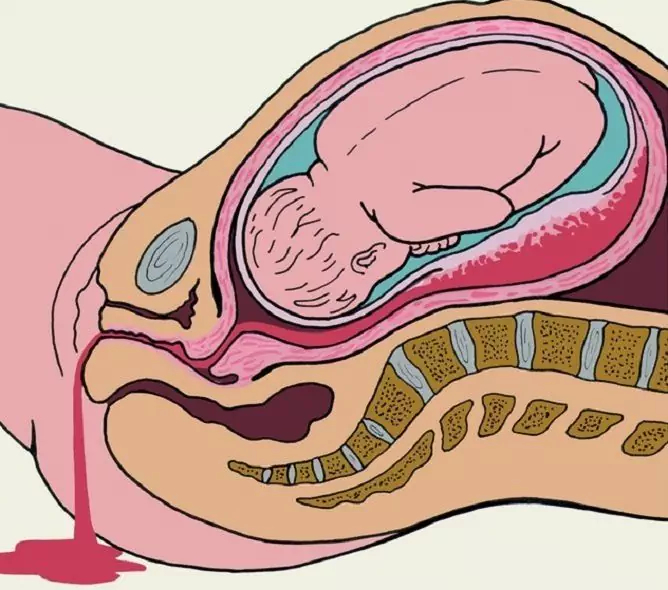- Author Rachel Wainwright [email protected].
- Public 2023-12-15 07:39.
- Last modified 2025-11-02 20:14.
Molluscum contagiosum
Brief description of the disease

As you know, the child's body is much less resistant to the invasion of various bacteria and viruses than the body of a healthy adult. This means that modern medicine knows many diseases that mainly affect children. One of them is called "molluscum contagiosum".
Molluscum contagiosum is understood as a viral lesion of the epidermis, which is the response of the skin to the effect of the pathogen. As a rule, the virus is found in children, but with the coincidence of adverse factors (a serious illness, a weakened immunity), it is quite capable of developing on the body of an adult.
Molluscum contagiosum in children is transmitted after direct contact with an infected person, or when sharing common hygiene items and toys. If timely preventive measures are not taken, molluscum contagiosum in children can lead to the outbreak of an epidemic in kindergartens and schools. In the case of adults, the process of transmission of the virus proceeds somewhat differently. To non-observance of personal hygiene, as the main reason for the onset of the development of the disease, there are added HIV infections and promiscuous sex life in a person, since in middle-aged and older people, the virus enters the body precisely during intercourse.
What happens when you get infected with molluscum contagiosum?
The elementary bodies of the mollusk penetrate into the surface layers of the skin, after which they increase in size, form increasingly large-scale colonies and gradually move to healthy areas of the skin. Clusters of pathogens in the affected area look like nodules filled with a granular mass. Conglomerates of molluscs are up to 2-3 cm in diameter and are located in groups. When molluscum contagiosum is diagnosed, treatment should begin as soon as possible. This is due to the fact that slowly but surely the colonies of pathogens spread throughout the skin.
Symptoms and course of molluscum contagiosum
The incubation period for the virus ranges from 2 weeks to several months. The timing of the onset of symptoms of molluscum contagiosum depends on the age of the patient and the general condition of his body.
One of the most common symptoms of molluscum contagiosum is a skin rash. They look like single and multiple nodules of an oval or hemispherical shape. The nodules do not hurt, they have the color of the normal skin. Often they shine, much less often they are surrounded by an inflammatory rim. Even less often, molluscum contagiosum in children affects not only the skin, but also the mucous membranes.
Molluscum contagiosum can progress over several years, but this is an extreme scenario. In most cases, the nodules disappear on their own within six months. In this case, any specific removal of molluscum contagiosum is usually not required, but experts still resort to some procedures in order to accelerate the destruction of the pathogens of the virus.
Note also that nodules - clusters of pathogens have a characteristic appearance, do not at all look like warts or any other skin diseases and therefore are easily diagnosed with a detailed examination of the patient. True, they can be confused with benign formations, but this is already a matter of the competence of the specialist who will conduct the examination.
Molluscum contagiosum - treatment of the disease

All measures to remove pathogens of molluscum contagiosum are reduced to gentle opening of the nodules and subsequent lubrication of the wound with an alcohol solution of iodine. To speed up the process, the removal of molluscum contagiosum is performed using cold (liquid nitrogen), electric current (diathermocoangulation), or surgery (scraping the contents with special instruments). In the event that doctors diagnose an extensive molluscum contagiosum in children and a large area of skin lesions, the patients are prescribed ultraviolet irradiation and antiviral ointments. The body's defenses are strengthened by the appointment of general strengthening procedures.
Do not self-medicate for any disease. Contagious molluscum was no exception to the rule. As we said above, nodules can be easily confused with benign tumors. Accordingly, squeezing out the formations without consulting a doctor, you can injure a hitherto harmless formation, which will then turn into a malignant form.
For a quick and painless recovery, it will be useful to decontaminate children's clothes, baby's personal hygiene items and toys. Adult patients are advised to give up sexual intercourse until the end of treatment, since if quarantine measures are not followed, the pathogen can enter the body of the partner of an infected person.
Prevention of molluscum contagiosum
Prevention of molluscum contagiosum consists in the timely detection of infection and adherence to the rules of personal hygiene. In addition, the activation of the body's defenses, strengthening the immune system is of great importance. The child needs to be tempered, do not forget about gymnastics, water procedures, exercise and outdoor games.
YouTube video related to the article:
The information is generalized and provided for informational purposes only. At the first sign of illness, see your doctor. Self-medication is hazardous to health!






